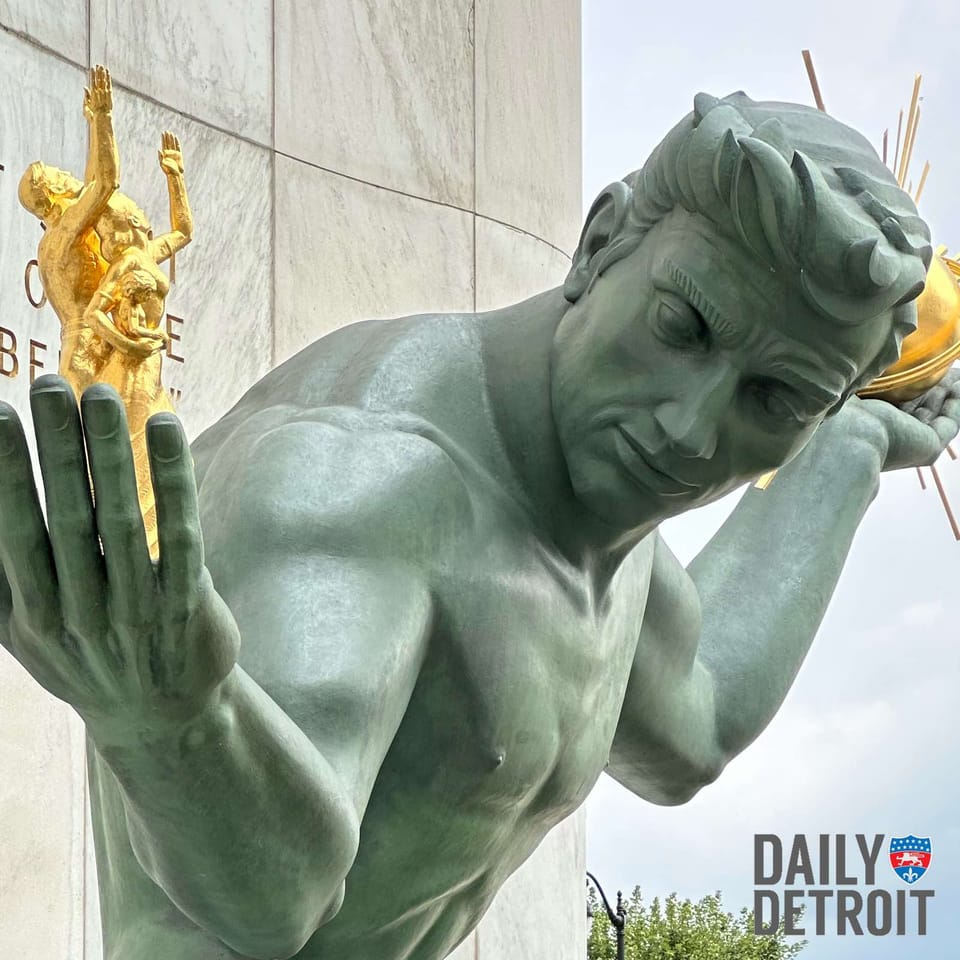Detroit is a city full of historic beauties, some better kept than others. From the Brush Park neighborhood of Detroit to Wyandotte, there are houses that are worth a visit. Though they all started as private residences, today they serve a variety of uses. Some are museums. Some are left vacant, and some remain in use as homes. Take a trip back in time and marvel at these gorgeous historic Metro Detroit homes.
1. Baker House

The Henry W. Baker House at 233 South Main Street in Plymouth was built in 1875 . Henry Baker’s family moved to Plymouth in 1842. Baker went into business and eventually found success in 1888 when the Daisy Manufacturing Company, the company he founded with several other men, began producing the metal Daisy Air Rifle. Baker died at his house on November 24, 1919.
The Baker House was built in the Italianate design and was well-known in Plymouth because of its unique tower, shaped like a pagoda. In 1943, the pagoda tower was removed during a renovation. In the 1970s the house was used for commercial purposes. Today, the house serves as headquarters for a law practice.
2. Charles G. Curtiss House

The Charles G. Curtiss House is located at 168 Union Street in Plymouth. The house was built around 1890 by its original owner, who was a builder by trade. Unfortunately, Curtiss didn’t get to live in his house very long. He died in 1893. His wife continued to live in the house until 1901.
3. Fair Lane Manor

Fair Lane Manor at 4901 Evergreen Road in Dearborn, belonged to one of Detroit’s most recognizable citizens, Henry Ford. The house was built between 1913 and 1915 and saw five architects work on it. Frank Lloyd Wright helped with the initial design, but when he left to travel Europe, Marion Mahony Griffin revised and complete the design, using her interpretation of the Prairie Style.
When the Fords returned from their trip to Europe, they dismissed Griffin and hired William H. Van Tine to add more English Manor House details. In 1913, Joseph Nathaniel French helped complete the residence.
The house has 56 rooms and sprawls 31,000 square feet. At the time it was built, the house included an electrical power plan, a greenhouse, a boathouse, riding stables, a children’s playhouse, and landscape designs by Chicago landscape artist Jens Jensen.
In 1957, the estate was donated to the University of Michigan. Today the main house, powerhouse, and garage operate as a museum and is under renovation. You can follow the progress here.
4. Ford-Bacon House

Located at 45 Vinewood in Wyandotte, the Ford-Bacon House was built in 1897 and changed hands several times in a few short years. Edward Ford, the founder of the Michigan Alkalai Company and son of the plate glass pioneer John Baptiste Ford, hired Malcomson & Higginbotham to design the house for him and his wife.
The house is a beautiful four-story house built in the Queen Anne style. It has 27 rooms and 11 fireplaces as well as a four-story bell tower in the rear. Despite the beauty of the home, Edward Ford and his wife only lived in the house for three years before moving to Toledo in 1900.
From 1900 to 1902, Ford’s son, John B. Ford lived in the house. In 1902, Mary Ford Bacon, the granddaughter of Edward Ford, and her husband, moved into the house. They lived there until Mark Bacon’s death in 1942. Ford Bacon then gave the house to the Wyandotte Public School System. Today, the building now serves as the public library.
5. George P. MacNichol House

The George P. MacNichol House, also known as the Ford-MacNichol House, is located at 2610 Biddle Avenue in Wyandotte, across the street from the Ford Bacon House. Edward Ford hired Malcomson & Higginbothom in 1896 to design the home as a wedding gift for his daughter Laura on her marriage to George P. MacNichol.
The MacNichols lived in the house for seven years before moving to Toledo to be closer to the Ford family. Jeremiah Drennen purchased the house, and his family owned it until the 1970s, when it was bought by Yvonne Latta. Latta restored the house and sold it to Wyandotte in 1977. Today, the house serves as the main historic house of Wyandotte Museums.
6. Col. Frank J. Hecker House

If you’ve driven down Woodward Avenue and have seen what looks like a smaller version of a castle, you’ve seen the Colonel Frank J. Hecker House. Located at 5510 Woodward Avenue, the house is hard to miss. It’s a reflection of the prestige its original owner achieved during his lifetime.
Hecker had served in the army, rising through the ranks. After the Civil War, he made his fortune in the railroad supply business. During the Spanish-American War, Hecker served in the Army again, and caught the attention of President Theodore Roosevelt, who appointed Hecker to the Panama Canal Commission in 1904. Closer to home, Hecker served as Detroit Police Commissioner.
The house was built from 1888 to 1892 by Scott, Kamper & Scott in the French Chateauesque style. The Chateau de Chenonceaux near Tours, France, served as inspiration for the Col. Frank J. Hecker House. With a total 21,000 square feet and 49 rooms, the house is an imposing structure.
During his lifetime, Hecker hosted parties with guest lists that included presidents William McKinley and Rutherford B. Hays. After Hecker’s death in 1927, the Hecker family used the house as a boarding house for college students. Today, the building is owned by Wayne State University and houses the Alumni Relations Department staff. Learn more about the Colonel Frank J. Hecker House here.
7. Lucien S. Moore House
Located in the historic Brush Park neighborhood, the Lucien S. Moore House (104 Edmund Place) is stunning. Built around 1885 in the French Renaissance Gothic Revival style, the house makes great use of its 7,000 square feet. Lumber baron Lucien S. Moore was the original owner. Now, it’s for sale for a cool $3,300,000.
8. William Northwood House
The William Northwood House, also known as the Hunter House, is located at 3985 Trumbull Avenue in the Woodbridge Neighborhood Historic District. In 1890, William Northwood, the co-founder of the Howard, Northwood Malt Manufacturing Company, commissioned George F. Depew to design the home. It was designed in the Chateauesque style with influences of Queen Anne and Second Empire styles evident in its features.
The house was finished in 1891 and cost $13,500 to build. In 1903, James J. Sullivan bought the home and lived in it until 1957. In the 1960s the house was converted into a church. The side porch and conservatory were demolished in 1966. In the 1970s the Hunter family bought the house and used it as a private residence.
9. Elisha Taylor House

William H. Craig, a Detroit lawyer, land speculator, and president of the Detroit Board of Trade had the Elisha Taylor House built in 1871 at 59 Alfred Street. Architects Koch & Hess oversaw the design and construction of the French Renaissance Revival, Second Empire Victorian home. In 1875, Craig sold the house to attorney Elisha Taylor, for whom it is named.
10. Thompson Home

The Thompson Home was built in 1884 as a home for elderly women. Upon his deathbed in the early 1870s, David Thompson, a wealthy Detroit businessman, told his wife to establish a charitable institution. Mary Thompson faithfully set aside $10,000 to build a home for aged women. However, construction didn’t start until almost 10 years later.
George D. Mason of the architectural firm Mason & Rice was commissioned to design the four-story home. The Thompson Home for Old Ladies, as the building was originally known, was 60 by 90 feet wide and had private rooms for 40 women. The Thompson Home enjoyed a few years as a prestigious retirement home for wealthy widows and saw several additions to it, including living quarters for the staff and a five-bed infirmary.
Unfortunately, the 1960s and 70s saw a decline in the number of residents, and in 1977 the home closed. Wayne State University bought the home in 1980.
11. David Whitney Mansion

Built in 1890, this is one of the few on our list that you can have dinner in today like you’re a baron as it’s a restaurant. David Whitney was at one point the wealthiest man in Detroit thanks to the lumber business, and his family has its name on another building – a skyscraper downtown that’s also been renovated – and this was his home. It’s built with a unique type of granite called South Dakota rose jasper, and clocks in at a stunning 22,000 square feet. It’s stood the test of time due to its sturdy construction and, for the most part, remaining occupied through much of its life. For an in-depth (but really good) story on this one, visit Historic Detroit and if you want to book dinner in this beauty, visit The Whitney website.
12. Ransom Gillis House


We saved what is probably the most widely recognizable house, at least nationally, for last. Featured on HGTV’s Rehab Addict and renovated by Nicole Curtis, this 4,800 square foot, 1876 Venetian Gothic beauty built for a dry goods merchant has been rescued from almost dead. The house was built for $12,000 in 1876 dollars, the equivalent of $1.8 million today. It’s now the architectural national poster child for a neighborhood that’s getting a ton of new development in the next few years. Many, many pieces have been devoted to this one – but here is a before and after gallery of the project.





















